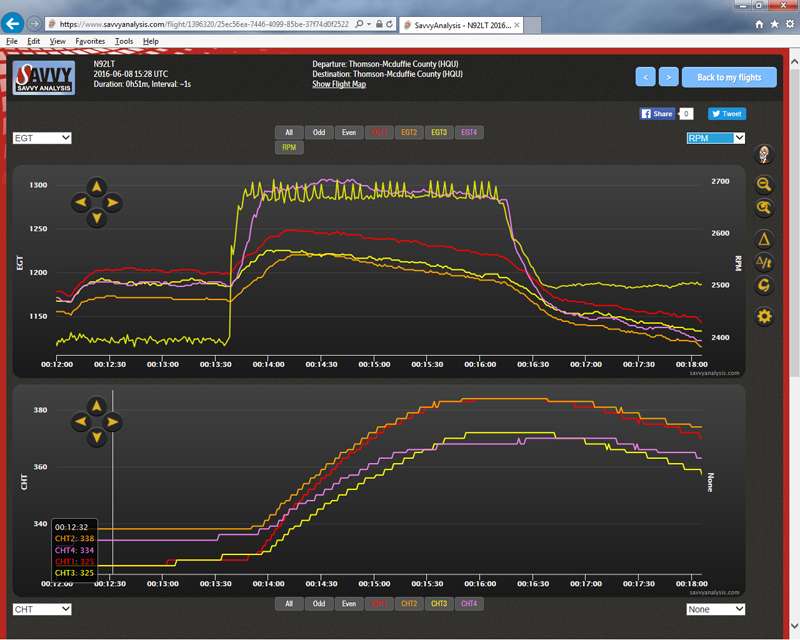CFI1513840
Well Known Member
https://www.savvyanalysis.com/flight/1336878/1a412e71-9a52-44b8-ad4e-e80cf2eb56e5
On a few occasions during initial climb I experienced an increase in EGT 4 of about 60 degrees over a period of a minute and a half, followed by an abrupt return to normal. This usually happens about the same point in the climb. SavvyAnalysis.com identified this as an ignition/spark plug problem and I agree with them. But what is a mystery to me is why is only lasts for a minute and a half and why it always occurs at about the same point in the climb. Could it be temperature related? Any ideas?
On a few occasions during initial climb I experienced an increase in EGT 4 of about 60 degrees over a period of a minute and a half, followed by an abrupt return to normal. This usually happens about the same point in the climb. SavvyAnalysis.com identified this as an ignition/spark plug problem and I agree with them. But what is a mystery to me is why is only lasts for a minute and a half and why it always occurs at about the same point in the climb. Could it be temperature related? Any ideas?





